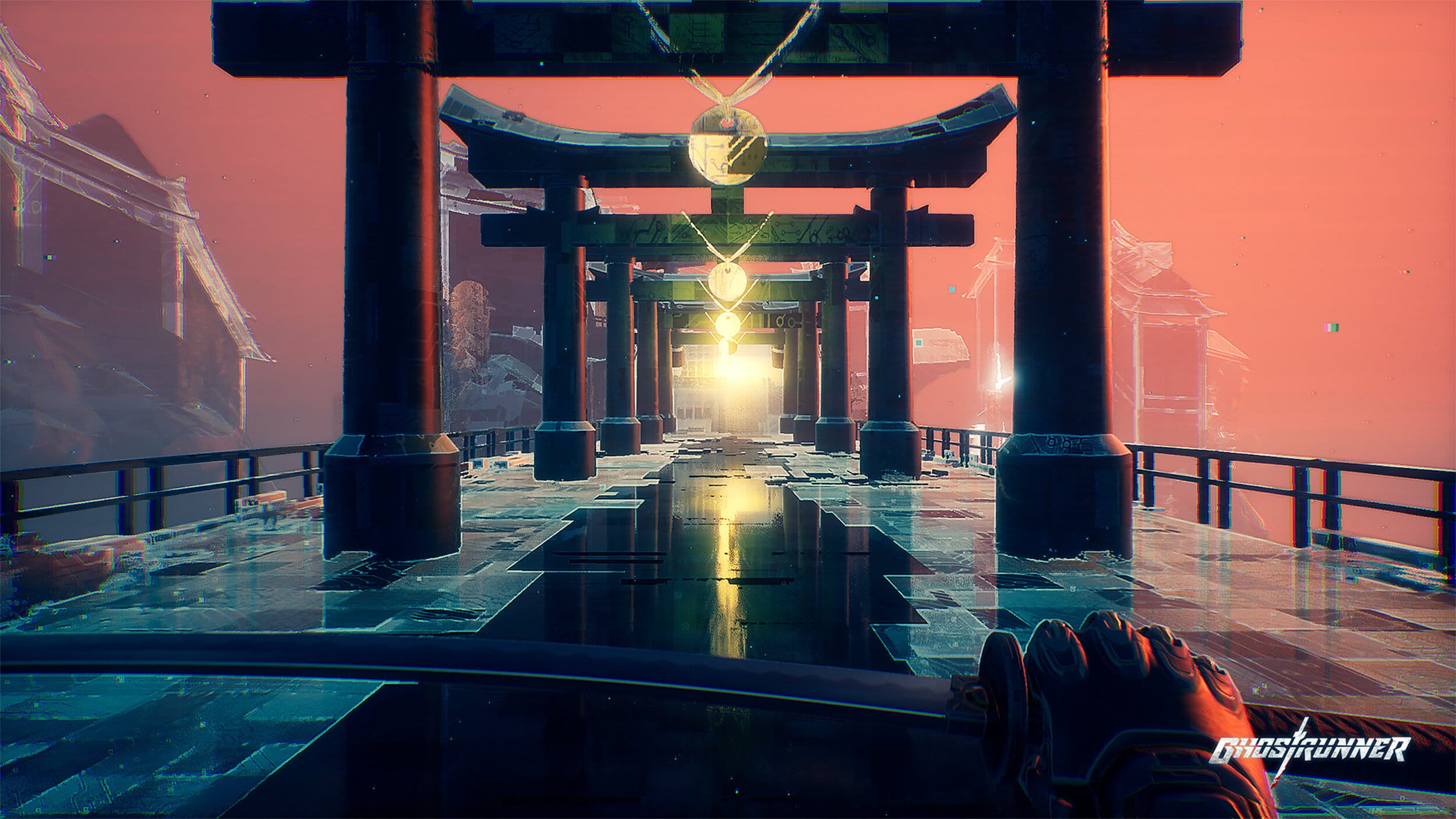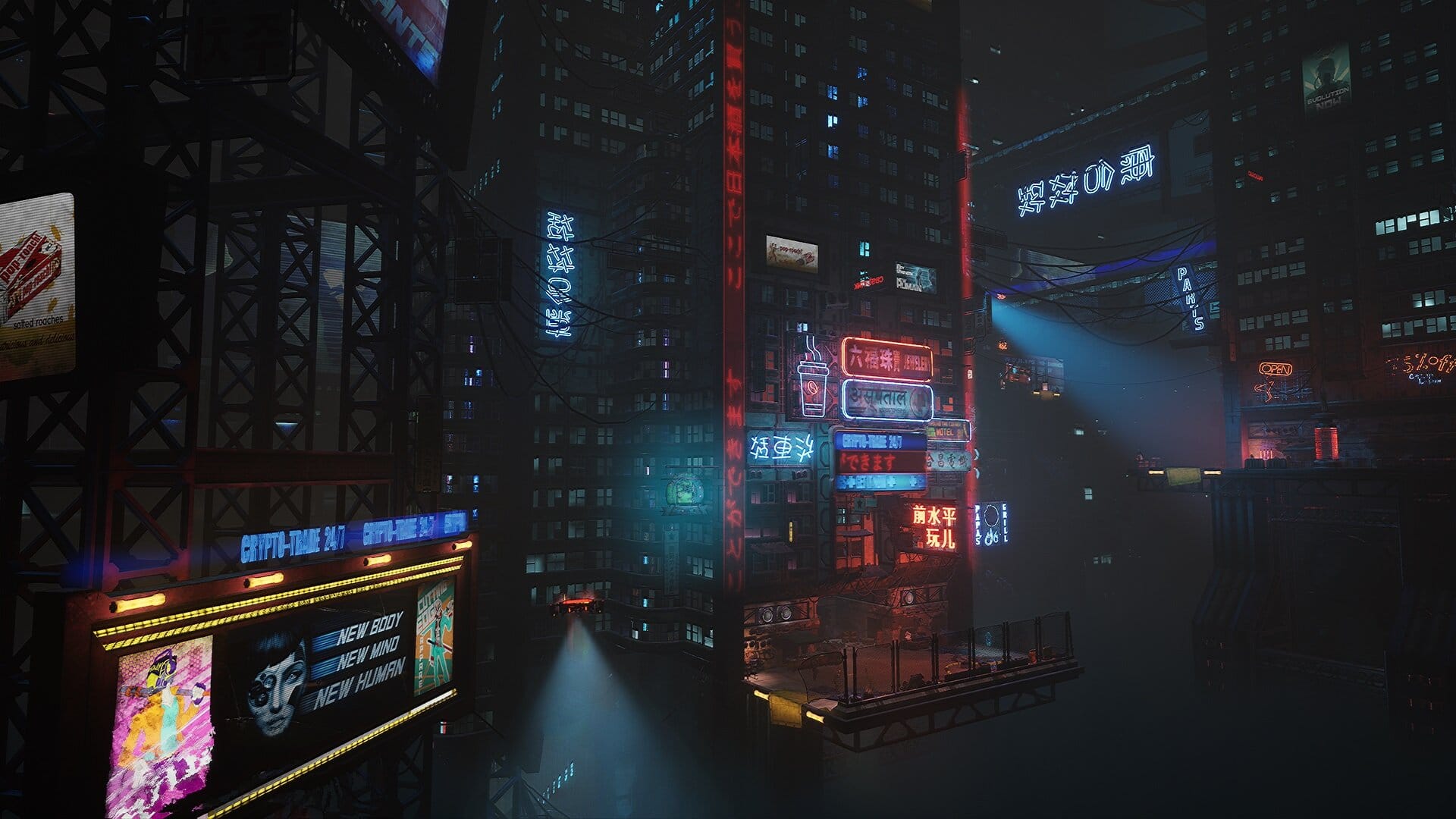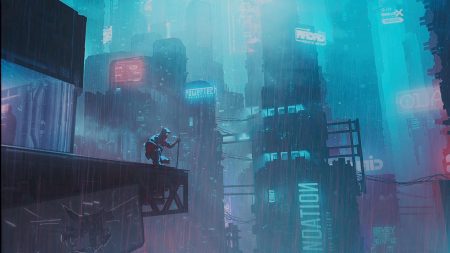Failing to Take Flight
Parkour games, much like their freerunning protagonists, are on precarious ground. On one hand, series like Mirror’s Edge and Titanfall have put a creative spin on first-person action, offering a unique sense of freedom and speed. On the other hand, that creativity hasn’t always translated to sales.
Ghostrunner is the latest game to stake a claim in the parkour genre. Developed by One More Level and published by 505 Games, Ghostrunner takes the freerunning of Mirror’s Edge and applies a cyberpunk coat of paint. Throw in katanas, virtual worlds, and cybernetic augments, and it’s easy to see the appeal.
Unfortunately, Ghostrunner fails to live up to its ambitions. Its parkour offers flashes of brilliance, thanks in part to clever platforming segments, but these moments are brought down by clunky controls, frustrating combat, and a host of technical issues. Genre fans may be able to overlook the rough edges, but Ghostrunner is a tough sell for almost anyone else.

Humanity’s Last Stand
Ghostrunner is set in a dystopian future. As Jack, you are a Ghostrunner: a supersoldier tasked with defending humanity. Unfortunately, mankind has been confined to Dharma Tower, a massive structure that serves as its last bastion. When this structure is threatened, you’re tasked with finding the warden of the tower, Mara the Keymaster, and setting things right.
On paper, Ghostrunner’s premise and setting are hardly unique, echoing titles like Deus Ex and 2016’s Furi. In reality, the game carves out a surprisingly interesting story for itself over its 7-8 hour runtime. Unfortunately, the vast majority of this narrative is told mid-action, with little in the way of cutscenes or set pieces. So, while the game has plenty to share, most ideas take a back seat to the action at hand.

Picking Up Speed
When it comes to action, Ghostrunner offers plenty—to mixed results. The game is divided into 17 levels, each set in a different part of Dharma Tower. Environments generally consist of industrial backdrops; panels and scaffolding provide spontaneous parkour routes, as do cranes, vents, and conveyor belts. If you’ve played a game in the genre, you’ll feel right at home.
Much like Mirror’s Edge, your goal is to get from point A to point B as quickly as possible. You can scale ledges with the tap of the jump button. Another button gives you the ability to grapple to objects and run against suspended walls. Other movement tools include a slide and a mid-air dash; using the latter triggers a slo-mo effect, which helps you line up jumps and dodge oncoming attacks.
There’s no penalty for taking your time, granted. But as with most games in the genre, speed is everything. At the end of each level, Ghostrunner flashes your completion time, encouraging you to perfect each run and compete for a top speedrun on the leaderboards.

Constant Stumbles
Yet while Ghostrunner asks players to master its intricacies, it pushes back at nearly every turn. For one, the game’s controls feel loose and cumbersome. Unlike Mirror’s Edge or Titanfall, which allow a fair degree of leniency for player jumps, Ghostrunner has no qualms punishing you for slight deviations in positioning. Expect to climb surfaces you meant to wall run, and vice-versa. These moments don’t feel challenging; they just feel frustrating.
Exacerbating this problem tenfold is combat. Ghostrunner tries to spice up its levels by peppering in various gunmen and warriors to block your path. With your trusty katana, you can cut down enemies, deflect bullets, and execute special takedowns. Yet while all the elements are here for good mayhem, they never truly gel.
The issue stems from how Ghostrunner handles hit detection. Similar to The Last of Us Part II, the game almost always registers hits when you’re running directly at an enemy. Thus, by angling your movement, you can sidestep oncoming bullets and create a safe approach.
Unfortunately, the game’s levels often force you into these direct encounters. There’s a heavy emphasis on deflecting bullets—something that’s satisfying to pull off but requires precise timing. While certain gunmen telegraph their attacks, others don’t, making them difficult to deal with. Even when you do successfully skirt bullets, it feels less like playing the game as intended and more like cheesing your way through.
Grappling with Ghostrunner’s controls is tricky enough. Layer on these enemies—each of which will kill you in a single hit—and the frustration level hits its peak.

Glimmers of Greatness
It’s a shame the controls and combat rarely clicked for me, because in the rare instances where everything does click, Ghostrunner shines. There’s a fluidity to the experience reminiscent of the very best parkour games; once you’re in that flow, it’s magic.
Most of these times came for me during Ghostrunner’s quieter moments. At certain points, Jack plugs into a digital network known as the Cybervoid. These segments provide a reprieve from combat, tasking players with large stretches of platforming and even some light puzzle-solving.
Completing these segments also awards new upgrades for Jack, like increased dashes and easier bullet deflections. Players can swap these abilities in and out as they please, by way of a Resident Evil 4-esque inventory menu. While a nice gesture for players looking to customize their playstyle, these abilities do little to salvage the overall experience.
Ghostrunner is further hampered by a bevy of technical issues. On PlayStation 4, the game suffers from stuttering and screen tearing; though far from unbearable, it’s certainly noticeable. The game also has some nasty bugs. In one early-game level, the path forward became inaccessible due to a pair of floor fans that wouldn’t activate. It took several hard resets to get them to work as intended, and even then, I found my game crashing periodically.
This brings me to perhaps the most aggravating point of all: saving. While Ghostrunner provides ample checkpoints throughout a level, the game doesn’t actually save during these points. Upon dying, you’ll respawn at the newest checkpoint, no problem. But if you quit the game and return later, you’ll be forced back to the start of the level. Worse yet, the game never properly explains this to players—ensuring that almost everyone will lose progress at one point or another.

Final Thoughts
Ghostrunner is a game of exciting highs and extreme lows. When its controls click, it offers a thrilling parkour platforming experience. But these moments aren’t worth contending with its frustrating combat and aggravating bugs. If you’re an enthusiast for first-person platformers and can overlook a glaring lack of polish, Ghostrunner may have some limited value. For all else, there are other genre titles more deserving of your time.
Score: 6.0/10
This Ghostrunner review originally appeared on DarkStation.com, where the game was awarded 3 of 5 stars.
David is the founder of The Punished Backlog. He has a problem finishing games he starts.
Just beat: Donkey Kong Bananza.
Working on: Hollow Knight: Silksong.
Can't wait for: Metroid Prime 4: Beyond.
Follow David on Twitter at @David_Silbert to keep up to date with all things The Punished Backlog.








